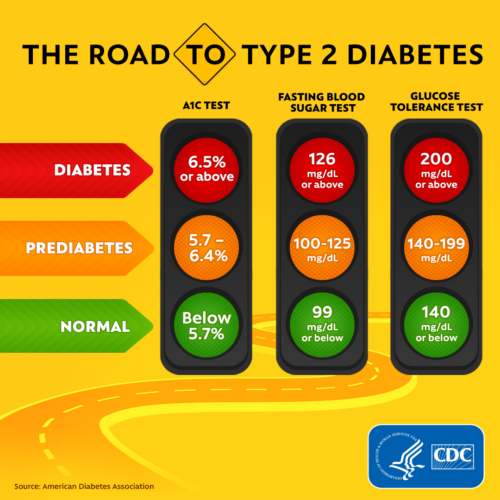
Could you be one of the 38 million American adults with diabetes or 88 million Americans that are pre-diabetic and not know it? This month is American Diabetes Month, and we want to shine a spotlight on what has become one of the fastest growing health epidemics in the United States. It is also one of the three top diagnosis St. Christopher Fund sees from truck drivers that apply for assistance. Statistics show that the number of people diagnosed with diabetes has grown 700% in the last 50 years! Coincidently, the cost of insulin has risen 1,700% since 1970.
Diabetes is a chronic (long-lasting) health condition that affects how your body turns food into energy. Diabetes occurs when the body does not adequately produce insulin or the body’s response to insulin is impaired. When taking a fasting blood glucose test, 99 and below is considered normal; 100-125 is prediabetic and 126 and higher is diabetic. This can be checked with a glucose meter or by a blood test.
To help understand what the problem is we need to understand how our bodies work. When glucose (sugar) is in the blood stream, it needs to get into cells so the body can function properly. We need some sugars to make ATP, which is energy for the body. The body needs insulin to help get the glucose (sugar) into the cell. If working correctly, the body should release insulin from the pancreas and attach to sugar in the bloodstream. It then goes into the cell. So, in a nutshell, the more sugar we eat, the more insulin we need. Over time, the cells stop responding to all the insulin created by the pancreas. This is called ‘insulin resistance’. The pancreas continues to make insulin trying to get the cells to accept it and blood sugar levels increase. Eventually, the pancreas can become overworked and not make enough and insulin is needed from an outside source.
Where do sugars come from? Primarily, we get our sugar from table sugars, grain, bread (some have 3 to 5 tsp of sugar in one piece), pastas, man-made sugars like high fructose corn syrup, and fruit. Fruit is accompanied by fiber which slows down sugar absorption in the bloodstream. Our bodies are designed to hold one teaspoon of sugar for our one gallon of blood. The average 12 ounce can of soda has 9 teaspoons of sugar in it. One soda a day can increase your risk of diabetes up to 25%.
Here is the good news. In many cases, it can be reversed! By making simple lifestyle changes, people can lower their blood sugar and become less insulin resistant. What does that look like for a professional truck driver?
- Movement – Incorporating movement and getting some physical activity each day is crucial. This can be as simple as doing laps around the truck, walking in place while getting fuel or parking far away from the store. Movement helps the body be more sensitive to insulin. You can find resources tailored specifically to the needs of truck drivers on the SCF website resource page.
- Food Intake- This is a “given,” right? Reducing the intake of pasta, rice, bread, and sugar will be beneficial to anyone but especially to the person who is insulin resistant. Learning the truth about sugar is important to everyone who wants to maintain good health.
- Weight Loss- If you get more movement and change your eating habits, weight loss will occur naturally.
- Quitting Smoking – Nicotine changes cells in the body making them resistant to insulin. The chemicals in cigarettes also cause inflammation making the body not respond to insulin. Smokers are 30% – 40% more likely to develop diabetes. Need help to quit smoking? Join Rigs without Cigs, the St. Christopher Fund smoking cessation program.
The takeaway: Diabetes is a serious chronic disease that can have debilitating effects on the body, but it can be managed or reversed by incorporating healthy lifestyle choices in your life.
For more information on getting and staying healthy, visit the St. Christopher Fund website or email julie@truckersfund.org.
Best of Health,
Julie Dillon
Wellness Manager, St. Christopher Fund
